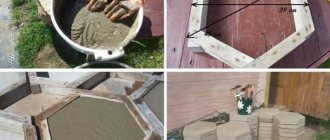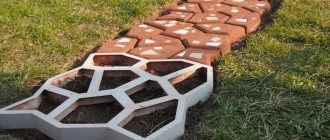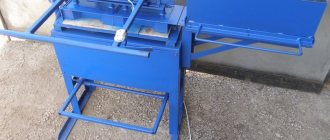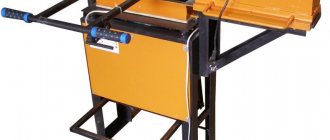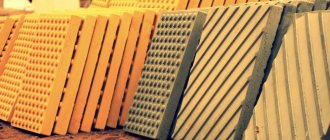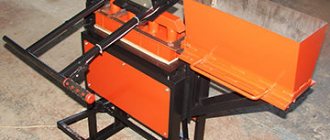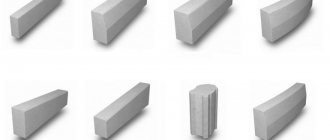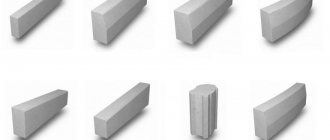The production of paving slabs is steadily increasing in volume. This is due to the fact that this material is widely used in the design of private areas, city streets, squares, parks, and sports grounds.
The versatility of using paving slabs is due to the variety of shapes and sizes, durability of the coating and ease of installation. In fact, this is the best option to give the landscape a landscaped and complete look. In the eyes of many ordinary people, paving slabs appear as square gray stones made of concrete. This is far from true.
Modern production offers such solutions that tiles simply give limitless scope to the imagination of architects and private developers. Therefore, we will try to tell you everything you need to know about this material.
How tiles for paths are made
Considering the diverse range of products, it is not difficult to guess that paving slabs are produced using various technologies. However, the key differences lie only in their own production recipes.
Depending on the purpose, the manufacturer may add coloring pigments, plasticizers, crumb rubber and other polymers to the mixture. This is necessary for the external design of the product. The main technological process remains unchanged and consists of the following stages:
- The base is prepared: usually it is a cement-sand mortar or low grade concrete.
- The mixture is poured into molds, which are placed on vibrating tables.
- The mixture is compacted by vibration. This allows for maximum strength and removes air bubbles.
- The forms are placed on racks so that the solution gains initial strength. This requires about 24 hours .
- Then the finished tiles are removed from the molds, laid out on pallets, and kept for 7 to 28 days , depending on weather conditions.
At the final stage, the products are packaged and sent to places of sale. Of course, the technological process is presented in a somewhat simplified form: each manufacturer has its own proprietary secrets. However, this does not change the essence, so many home craftsmen purchase ready-made forms and set up their own small production.
Technical characteristics of paving slabs GOST 17608-2017
No.
Characteristic
Description of technical requirements and characteristics in accordance with GOST 17608-2017
| 1. |
Compressive strength of concrete
Concrete strength is the most significant parameter of concrete quality.
Designation: B25, where B is the strength class, 25 - the tile can withstand a load of at least 25 MPa, or 254 kgf/cm2.
For concrete paving slabs it is characterized by strength classes - B22.5 - B40.
In the laboratory of the Stellard plant, strength parameters are checked after the production of each batch of paving elements. To do this, selected samples are placed under a laboratory press and the upper limit of its compression endurance is determined.
In order for the products to be shipped, the strength of the slabs must be at least 90% of the compressive strength class declared by the manufacturer (70% is allowed as agreed with the client).
2.
Concrete grade for frost resistance
Frost resistance grade is a very important indicator of concrete products, showing how many freezing and thawing cycles (one cycle – freezing and thawing of the sample at temperatures from -20 to +20) the sample can withstand without losing its strength.
The grade of concrete for paving slabs in terms of frost resistance according to GOST 17608-2017 must be at least F200.
Designation: F200, where F is the frost resistance grade, 200 is the number of cycles.
3.
Abrasion of concrete
Abrasion is one of the indicators of the service life of paving slabs, which shows how much the product changes in volume and weight when exposed to friction forces. The abrasion properties of concrete are tested in laboratory conditions by performing tests on an abrasion wheel.
GOST requirements for abrasion of concrete slabs:
G1 – not > 0.7 g/cm2;
G2 – not > 0.8 g/cm2;
G3 – not > 0.9 g/cm2;
All products of the Stellard plant correspond to the G1 abrasion grade.
4.
Operations group
Depending on the impacts and loads during operation, all concrete paving slabs are divided into 4 groups:
A - street sidewalks, pedestrian paths and areas of private houses, which are not accessible even by passenger vehicles.
B – sidewalks of heavily trafficked streets, city squares, bicycle paths, public stops. transport.
B- low-intensity roads, parking areas, gas stations.
D – areas with particularly high load (container terminals, ports, warehouse areas).
5.
Water absorption
Water absorption is the ability of concrete slabs to absorb water, a characteristic on which the service life of the products directly depends. Concrete, which absorbs a small amount of water, will not collapse from internal pressure when the moisture frozen in it thaws.
Water absorption according to GOST should not exceed by weight, %:
5 – for slabs made of heavy concrete;
6 – for slabs made of fine-grained concrete.
All Stellard paving slabs have a water absorption rate of no more than 5%
This indicator means that with a paving stone 6 cm thick weighing 2.7 kg, it will not absorb more than 135 g of water.
6.
Marking of paving slabs
Plates are designated by grades according to GOST 23009-78
For example, consider the markings of one of the forms of Stellard paving stones:
New city V.15.Psm.6, where
- New city - product name,
- B – slab operation group;
- 15 – serial number according to the nomenclature of the manufacturer;
- Psm - type of slab depending on the configuration (in this case - rectangular mixed collection);
- 6 – slab thickness in centimeters, rounded to the nearest whole number.
7.
Materials and technologies
Depending on the manufacturing method, different types of materials are used for the production of paving slabs. Despite the variety of shapes and sizes, all products in this category available on the market can be divided into three groups:
- Concrete vibrocast
It is made of lightweight concrete, which is poured into molds and compacted on vibrating tables. We described this process above. - Vibration-pressed concrete
Concrete mixture is also used here, but the manufacturing process is somewhat different. In particular, in addition to vibration compaction, the forms are pressed with a press to achieve increased strength. In addition, vibropressed tiles are dried not in the open air, but in special chambers.
- Polymer sand
A mixture of fine sand and polymer materials is used here. The components are mixed, dyes are added and subjected to heat treatment. After this, the composition is given the desired shape and compressed to obtain increased strength.
Knowing these features, you can easily select suitable paving slabs. The difference between the listed groups lies in the cost of the finished product and the scope of application. For example, polymer-sand products are more suitable for decorative purposes, and vibropressed tiles will be an ideal solution for paving high-traffic paths.
Comparative characteristics table
| Properties | Polymer sand paving slabs | Concrete vibro-cast paving slabs | Concrete vibropressed paving slabs |
| Average density, kg/m3 | 1650 — 1800 | 2350-2400 | 2200-2400 |
| Mass water absorption | 0,15 | 4-4,5 | 5,5-6,5 |
| Compressive strength, MPa | 17 — 18 | 40-50 | 40 |
| Bending strength, MPa | 17 — 25 | 6,0-7,0 | 5,0-5,5 |
| Frost resistance, cycles | more than 500 | 300-400 | 200-300 |
| Abrasion, g/cm2 | 0,05 — 0,1 | 0,3-04 | 0,5-0,7 |
Paving stones
Unlike paving slabs, this material has a larger internal volume, i.e. its height is greater, and its dimensions in the plane are smaller or the same. Also answering the question of what paving stones are, it should be noted that they have high strength and can withstand very significant weight loads. Therefore, it can be used for paving roads and sidewalks with heavy pedestrian traffic. It is produced using the following technologies:
- vibrocompression, vibration casting and semi-dry pressing from concrete mixtures;
- processing of granite, marble and other natural stone to produce fully chipped products that are smooth on one or five sides;
- clinker firing of clay.
Rubber, polymer sand and polymer materials are not used for the manufacture of paving stones. The most common piece products are made of concrete, but it is not recommended to use them on roadways due to faster wear.
Types, sizes, characteristics
Shapes and sizes of paving stones.
Paving stones come only with a rectangular or square surface shape. Figured products of this type are not produced, since it is more difficult to lay figured material of great thickness, it is more difficult to manufacture, and the stability of such a road surface will be worse.
The thickness of the paving stones varies from 60 to 120 mm in increments of 20 mm. The thinnest paving stones are made using clinker firing technology. Its thickness starts from 50 mm.
The most common rectangular surface sizes are 100x200 mm, 70x210 mm and 160x240 mm. Square-shaped products have dimensions of 50x50 mm, 100x100 mm, 150x150 mm and 200x200 mm.
The exact weight of the paving stones depends on the density of the source material, but on average for tiles 60 mm thick it is 135-145 kg/m2. 11-12 m2 or 1600-1700 kg are placed on a pallet. A square meter of tiles with a thickness of 80 mm is equal to 180-185 kg and 10-11 m2 are laid on a pallet.
Features of choice
When choosing paving stones, you need to make sure that there are no visible defects on the surface of the material. The fact is that there are no noticeable chips, cracks or holes. Even if they are located on the back or side, if moisture gets inside, this can lead to the destruction of the paving surface.
Stones made of concrete must have the same color shade without salt or other stains. The quality of the material can be checked by tapping two products against each other. The sound should be clear. A dull sound indicates poor manufacturing quality. Clinker products must have a dense and durable surface on any of the faces.
The thickness of the paving stones must correspond to future operating conditions. Where it is planned to move a passenger car, the thickness of the stone should be at least 80 mm, and for small trucks 100 mm will be required.
Types and shapes of tiles for laying sidewalks
Let's talk about varieties. Today, the following types of finished products are very popular:
- Paving stones
are a durable and frost-resistant material with a high level of environmental safety. City sidewalks and squares are often paved with such tiles. The advantage of paving stones is that they are neutral to any aggressive environment, so they can be reused. - With rubber filling
This option is ideal for arranging playgrounds. When making tiles, rubber crumbs are used, which forms a soft surface. Accordingly, if a child falls on such a covering, he will be able to avoid injury.
- Polymer sand
A practical and convenient solution for improving private sector areas. The tiles are durable and come in a wide range of colors, allowing you to give areas an original look. It is important to understand that the strength of such products does not allow them to be used for paving parking spaces.
- Reinforced
This is a type of vibrocast tiles where wire mesh is used to increase strength.
- With 3D pattern
A relatively new variety that will decorate any country house. Using photo printing technology, various designs are applied to the tiles. Thanks to the special coating, the surface of the products does not wear off even with prolonged mechanical exposure and UV radiation.
If we talk about forms, there are no restrictions at all. Depending on the formwork, paving slabs can be given any geometry. However, certain standards also apply in this direction. The following forms are considered the most popular:
- Clover . A standard quatrefoil that is ideal for any design solution.
- English cobblestone . It has a texture similar to natural stone, so it accurately imitates the pavement of an ancient city.
- Wave . This form was not chosen by chance. Wave-shaped tiles have better surface adhesion, which significantly increases the service life of the sidewalk.
- Brick . It accurately copies the usual building material in miniature.
- Tumbled . This is a rectangular tile with rounded edges.
As you can see, the variety of geometric shapes makes it possible to add charm and originality to the site. In addition, most manufacturers produce paving slabs according to individual customer projects. Such products usually cost more.
Variety of paving stones
Paving slabs for paths can be classified according to several parameters: thickness and weight, color, shape, size.
Paving stone thickness:
- less than 4cm;
- 4 cm;
- 6 cm;
- 8 cm or more.
As a rule, a 3 cm product is an economical vibro-cast paving stone. Large plants often do not make paving slabs less than 4 cm thick.
Paving slabs with a thickness of 4 cm are used for sidewalks with a pedestrian area, six-centimeter FEMs are used for pavement with the possibility of entry of passenger vehicles, FEMs with a thickness above 6 cm can be used for roads with private passage of vehicles, including freight.
The weight of the paving slabs varies depending on the height. Of course, information about how much a product weighs may differ from different manufacturers, but on average the weight of vibro-pressed paving stones is as follows:
- 4 cm – weight of paving slabs is about 90 kg/m2;
- 6 cm – about 140 kg/m2;
- 8 cm ~ 190 kg/m2.
The sizes of paving slabs also vary.
Paving slabs in sizes 10x20, 30x30 are familiar options for most consumers, but in addition to this size of paving stones, the stone can have almost any size of square and rectangle, and products of irregular geometric shapes are also very popular today. As a rule, small manufacturers cannot provide a wide range of products. All kinds of types and sizes of concrete paving stones are produced by larger-scale production. The same applies to the color filling of the tiles. Paving stones and paving slabs can be gray or colored. Gray is always an order of magnitude cheaper than colored, since no pigments are used in its production. But if you approach the installation correctly and combine several types of paving stones that differ, for example, in shape, the gray stone will be in no way inferior in aesthetics to the colored stone.
Standard Size Charts
| Tile type | Size(mm) | Weight, kg) | Quantity on pallet sq.m | Number of pieces per sq.m. | Pallet weight (kg) |
| Paving stones | 200*100*60 | 2,5 | 10 | 50 | 1250 |
| Wave | 237*103*60 | 3,05 | 10 | 40 | 1220 |
| Coil | 225*136*60 | 3,2 | 10 | 40 | 1280 |
| English cobblestones (brick) | 250*120*60 | 3,8 | 10 | 32 | 1216 |
| Scales | 245*190*60 | 3,6 | 10 | 33 | 1188 |
| Honeycomb | 250*180*60 | 3,5 | 10 | 38 | 1330 |
| Tile type | Size(mm) | Weight, kg) | Quantity on pallet sq.m | Number of pieces per sq.m. | Pallet weight (kg) |
| Eco | 265*265*60 | 6,4 | 10 | 14 | 896 |
| Gzhelka | 298*298*45 | 5,8 | 10 | 12 | 1032 |
| 220*220*45 | 2,8 | ||||
| Clover smooth | 267*218*45 | 10 | 28 | ||
| Clover relief | 267*218*45 | 10 | 28 | ||
| Giant's Footprints | 300*530*45 | 10 | |||
| Rocco | 290*190*45 | 3,35 | 10 | 24 | 804 |
| Tile type | Size(mm) | Weight, kg) | Quantity on pallet sq.m | Number of pieces per sq.m. | Pallet weight (kg) |
| Old city | 178*118 | 2,65 | 10 | 12 | 660 |
| 118*118 | 1,65 | ||||
| 88*118 | 1,2 | ||||
| Vibropressed paving stones | 200*100*60 | 2,5 | 10 | 50 | 1250 |
| Vibration-pressed coil | 225*136*60 | 3,2 | 10 | 40 | 1280 |
| Classic | 115*115*60 | 1,72 | 10 | 35 | 602 |
| Maple | 218*218*45 | 4,2 | 10 | 21 | 882 |
Large size tiles
| Tile type | Size(mm) | Weight, kg) | Quantity on pallet sq.m | Number of pieces per sq.m. | Pallet weight (kg) |
| California | 300*300*30 | 6 | 10 | 11 | 660 |
| Net | 350*350*50 | 13,75 | 10 | 8 | 1100 |
| Flower | 350*350*50 | 13,75 | 10 | 8 | 1100 |
| Web-35 | 350*350*50 | 13,75 | 10 | 8 | 1100 |
| Web-40 | 400*400*50 | 18,3 | 10 | 6 | 1098 |
| 8-bricks | 400*400*50 | 18,3 | 10 | 6 | 1098 |
Popular types of paving slabs
| Name | thickness, mm | width, mm | length, mm |
| Pavement | 80 | 70 | 140 |
| Old city | 60 | 180 | 120 |
| Brick | 60 | 100 | 200 |
| Clover | 30 | 295 | 295 |
| Florida | 30 | 300 | 300 |
| Square | 700 | 500 | 500 |
| Well | 30 | 300 | 300 |
| Eight | 500 | 400 | 400 |
| Checkers | 30 | 300 | 300 |
| Turtle | 30 | 300 | 300 |
The right foundation is the key to durability
Vibropressed tiles are one of the most durable, reliable and durable paving materials, but only if used correctly. That is, the material must be selected at the correct thickness, based on the operating conditions and expected loads, plus it must be laid correctly. The foundation must correspond not only to the loads and trafficability, but also to the type of soil on the site and the level of groundwater. If you refer to STO 46505580-002-2020 (paving using vibro-pressed products), it suggests laying tiles only on a permeable base. This is considered to be a cushion made of several layers of sand and crushed stone of different fractions, including geotextiles at the base and between the underlying and load-bearing layers (sand/crushed stone).
However, in some situations, when difficult soil or consistently high loads (parking of heavy trucks), a reinforced concrete slab cannot be avoided. But in this case, it is necessary to ensure rapid removal of moisture - strictly maintain a slope of at least 0.5 cm per linear meter; It is additionally recommended to make drainage holes so that water can go deeper. Plus, we must not forget about expansion joints, and if the heaving is strong and concrete cannot be avoided, a layer of EPS slabs can be included in the paving pie instead of dense geotextiles.
Like a concrete base, laying tiles on a mixture of sand and cement and sprinkling the joints with the same mixture is gradually becoming a thing of the past. To avoid deformations during the period of soil thawing and the appearance of efflorescence on the tiles, sand is used both during laying as an underlying and leveling layer and to fill joints. After laying the covering and filling the joints, the final stage of paving is compaction with a vibrating plate (with a rubber nozzle).
Criteria for choosing a good material
When buying paving slabs, the customer’s natural desire is the durability of the coating. Let us immediately clarify that high-quality products, manufactured in full compliance with the technological process, can last for decades without losing their original properties. However, how to choose a good tile from the variety available on the market?
You can use the following recommendations:
- It is better to purchase colored tiles from trusted suppliers. Unscrupulous manufacturers often replace expensive coloring pigments with cheap analogues. Accordingly, after the first rain, the tiles will lose color.
- Be sure to inspect the back surface. There should be a uniform color, without yellow or brown spots. The change in pigment is caused by the use of sand with a high clay content. The service life of such products is noticeably shorter.
- The front surface should be smooth, without even microscopic cracks or chips. Ideally, the shade of the front and back surfaces should be identical.
When purchasing paving slabs, choose products from the same batch. Products from different batches may have differences in color and inconsistencies in geometric shapes.
What to choose?
When choosing tiles or paving stones, you need to understand that the decision depends, first of all, on the conditions of future operation of the road surface, the desired durability, appearance and financial capabilities of the developer.
Difference in operating conditions
Paving stones are characterized by a smaller surface size and greater thickness. Thanks to this, the weight load on the surface of paving stones is distributed simultaneously over 2-4 stones, and for paving slabs - onto one large area product. As a result of this distribution of loads, paving stones can be used in more severe operating conditions.
In addition, paving stones are characterized by higher frost resistance and wear resistance. All this determines the cobblestone road surface as stronger and more durable, but more expensive and difficult to install.
Comparative advantages of paving stones and tiles
An important difference between these two types of road materials is their cost. When using the same type of raw material, paving stones, due to their thickness, will always cost more than paving slabs. Therefore, the choice of material should be based on performance requirements.
For a garden path that is not walked very often, inexpensive vibrating concrete tiles are quite sufficient, but it is better to pave the driveway to the garage with paving stones 60-80 mm thick.
In the courtyard near the house, it may be worth laying clinker tiles or beautiful figured products.
The difference between paving stones and tiles is in size.
In any case, tile flooring is less durable, but more beautiful and cheaper. Based on these main differences, the material should be selected for each specific case.
Laying scheme
Installation of this building material is extremely simple: even a novice builder can handle the work. The main thing is to think through the future design of the path in advance, and strictly follow the following sequence of actions:
- Preparation . The site of the future sidewalk is cleared of the turf layer and a sand cushion about 10 centimeters . It is recommended to spill the sand with water and compact it thoroughly.
- Installation . The tiles are laid in the direction away from you, adjusting each element with a rubber hammer, leaving gaps of 1-2 mm . When the entire surface is laid, the sidewalk is leveled with light tapping, focusing on the building level.
- Clutch . The remaining gaps are filled with cement-sand mortar, and the sidewalk is spilled with water.
The coating does not require further maintenance: simply sweep away the dust periodically. It is recommended to wash colored products occasionally to prevent the colors from fading.
Historical reference
Roads have been paved with natural stone since the “beginning of time” - they were simply laid unprocessed, in large pieces. Later they began to give it the shape of a flat cube and the first granite paving stones appeared. For centuries, there was no alternative to this material, until the industrial boom of the last century began to dictate its conditions. The preparation of stone and small-format paving itself have ceased to “keep pace” with rapidly growing cities. And in our country, granite has been replaced everywhere by asphalting not only roads, but also pavements and walking alleys. However, asphalt also had enough disadvantages, and over time it became clear that paving stones had been written off early. A compromise between asphalt and stone paving stones has become concrete paving slabs, also known as concrete paving slabs or concrete paving stones.

